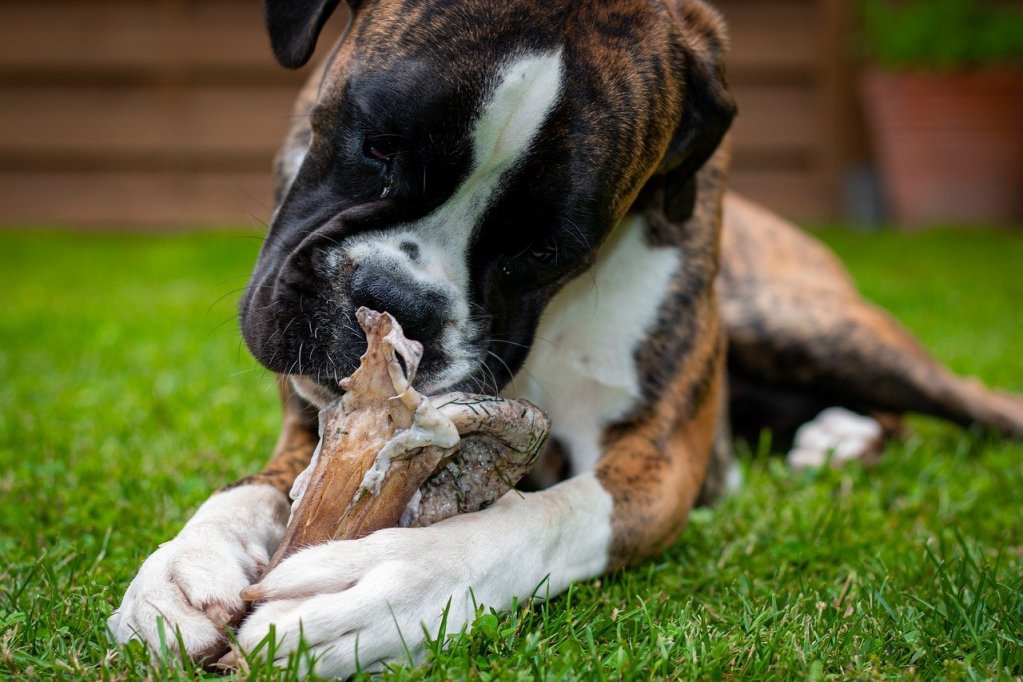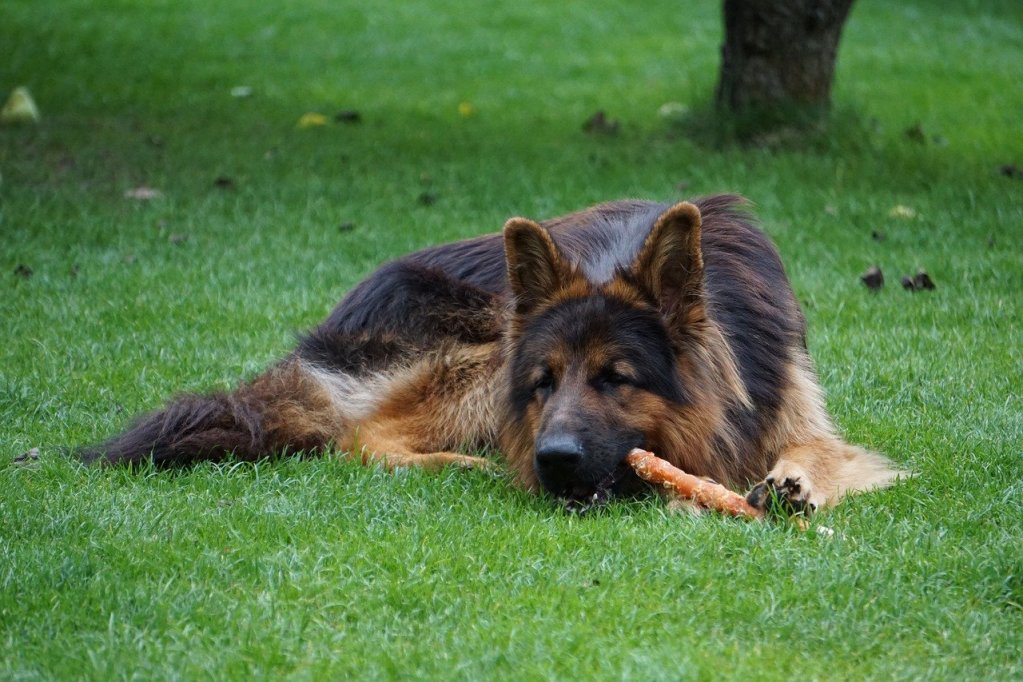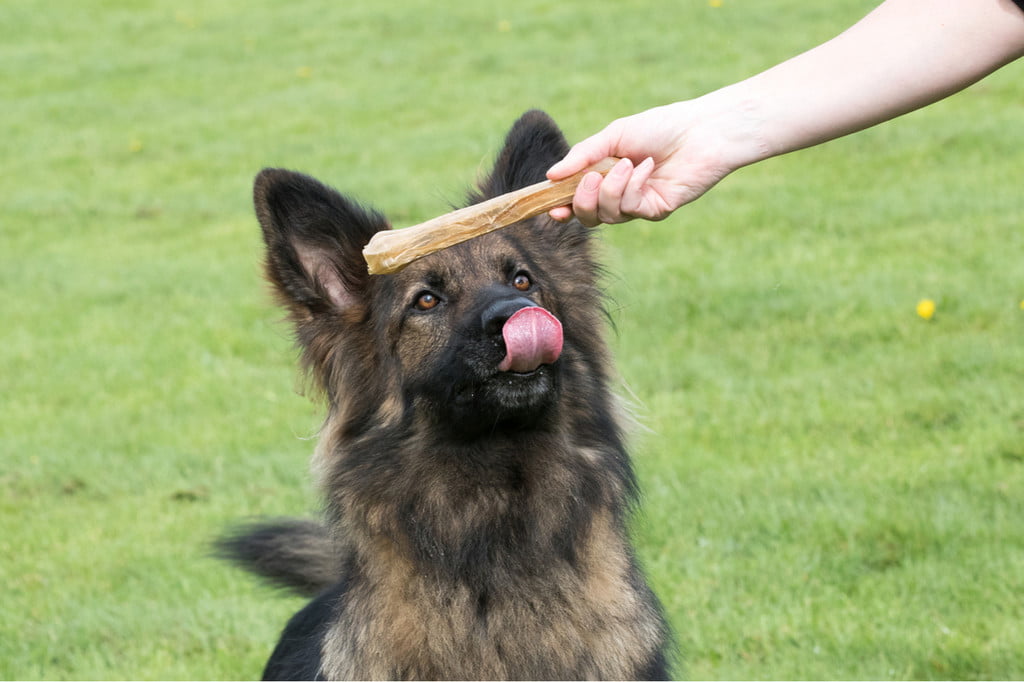
What do blueberries, kale, and broccoli all have in common? In addition to being delicious, all three are part of the group of so-called superfoods. Unfortunately, there’s no federally regulated definition for the term, but Harvard scientists claim food that “offers high levels of desirable nutrients, is linked to the prevention of a disease, or is believed to offer several simultaneous health benefits beyond its nutritional value” can be labeled superfoods.
Just like you might add chia seeds to your granola or spirulina powder to your smoothies for additional vitamins and minerals, you also want to make sure your dog’s food and treats pack a beneficial wallop. Made famous on Shark Tank, Himalayan dog chews have become one of the most hotly debated treats in the pet food game, which begs the question, “Are Himalayan dog chews as healthy as some people think?”
Here’s what you need to know about one of the trendiest treats on the market.
What are Himalayan dog chews?

Himalayan dog chews — sometimes referred to as Himalayan yak chews — are preservative-free dog treats made from a combination of yak milk and cow milk. Depending on the brand, some chews may contain added salt or lime juice for a pop of extra flavor.
Once the ingredients are blended together and allowed to solidify (a process that takes roughly three months), the end result is a hard, cheesy treat that dogs love to chew on. But are these dog treats actually good for your precious pooch? Let’s find out.
Are Himalayan dog chews safe for my dog to eat?

The history of dog treats is a little muddied. Some say they were accidentally created by a London-based butcher in the 1800s, but others say the first dog biscuits were invented by James Spratt, an electrician from Ohio who came up with the idea while working in London and witnessing boatmen feed their dogs scraps. But there is one fact that isn’t up for debate: In 1907, inventor Carleton Ellis first developed the now-ubiquitous bone-shaped dog treats.
But dog biscuits aren’t the most nutrient-dense treats, so pet parents began to search elsewhere. For a time, rawhide treats and animal bones were considered the best option, but as health problems — intestinal blockages, broken teeth, and even incidents of choking — became more widespread, many pet parents turned to more easily digestible solutions. At first glance, Himalayan dog chews seem like the perfect option. But are they? We’ve consulted the experts, and here’s what they have to say.
The pros of Himalayan dog chews
Like all tasty treats, Himalayan dog chews have positives and negatives you should know about. On the plus side, you have the following benefits.

Long-lasting
These densely cheesy chews last longer than dog biscuits, allowing your chow hound to enjoy his treat for extended periods of time. As an added bonus, spending more time on a single treat means that your pooch may beg for fewer treats in general, which can help him maintain a healthier weight.
Allergen-free (for most dogs)
Some store-bought treats use preservatives and fillers to bulk up their size and longevity. Unfortunately, some dogs are gluten-intolerant, removing many name-brand treats from your list of possible doggy rewards. On the flip side, pets can be allergic to the lactose in milk, so we recommend starting off with a small treat until you know how well your pooch tolerates Himalayan chews. (Or opt for a lactose-free version!)
Limited ingredient list
Himalayan dog chews contain only four ingredients: yak’s milk, cow’s milk, lime juice, and salt. Because milk is rich in protein — and jam-packed with essential amino acids — you can feel good about giving your dog a treat that will benefit his skin, coat, teeth, muscles, and more.
The cons of Himalayan dog chews
On the flip side, Himalayan dog chews might not be the best option for all dogs. Here are a few of the downsides.

Ingredients
While salt is essential for your dog’s cells to function, too much of a good thing can lead to health problems. If your vet has recommended a low-salt diet for your pooch, you’ll probably want to steer clear of these chews, which contain salt as one of four ingredients. Additionally, hefty pups don’t need extra fat in their diet, so stick to low-fat treats like carrots or blueberries instead.
Dental problems
Himalayan dog chews are much easier on your dog’s chompers than, say, rawhide or bones, but that doesn’t mean they can’t cause damage. These dense treats are still difficult to chew, and some dogs may crack a tooth or two if you feed these treats regularly.
Potential choking hazard
Like all chew treats, it’s possible that your pup will bite off a large chunk and choke on it. For this reason, we recommend keeping an eye on your dog at all times if you give him a chewy treat. It’s always better to be safe than sorry.
Do vets recommend Himalayan dog chews?

Despite the potential choking hazard, yes, vets do recommend Himalayan dog chews because they can improve your dog’s dental health. Their easily digestible nature also makes them a solid treat option for dogs with more sensitive digestive tracts. If you’re curious about whether Himalayan dog chews are a good snack choice to supplement a well-balanced diet, we recommend speaking to your vet before you splurge on a pack of treats.
How often can dogs have Himalayan yak chews?

It depends on the pup and their exact diet. As mentioned, you don’t want to overdo it on any treats or cause your animal to gain a lot of weight. Also, they might have their own preferences that you’ll quickly discover after letting them try all the different snack options.
Because of their high salt content, stick to no more than one chew per day, and even less will be better for most dogs. If your pup has a history of digestive issues, call the vet first and make sure they don’t foresee a problem. Then, start Fido off with a small bite and watch them go to town on their new favorite morsel.
Himalayan dog chews are a safer alternative to bones and rawhide chews, but only in moderation. We don’t think there’s anything wrong with rewarding your pup with the occasional cheesy treat … as long as those aren’t the only treats you give. Raw vegetables like green beans, broccoli, cucumber, and butternut squash are all relatively low in fat and calories. If your pooch has a sweet tooth, give him a few chunks of pumpkin, berries, apples, or banana slices in between his cheesy snacks.



